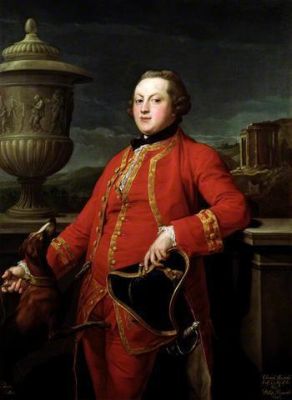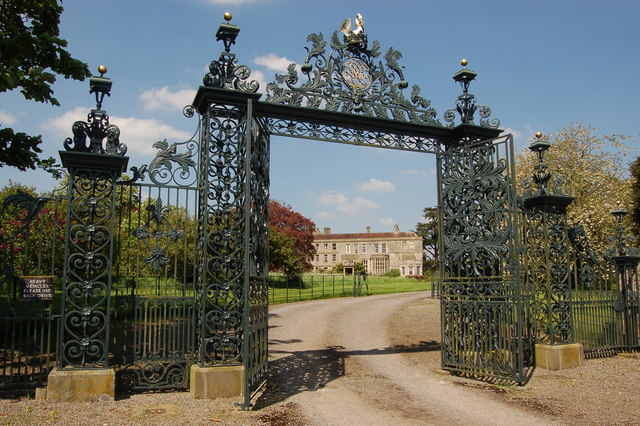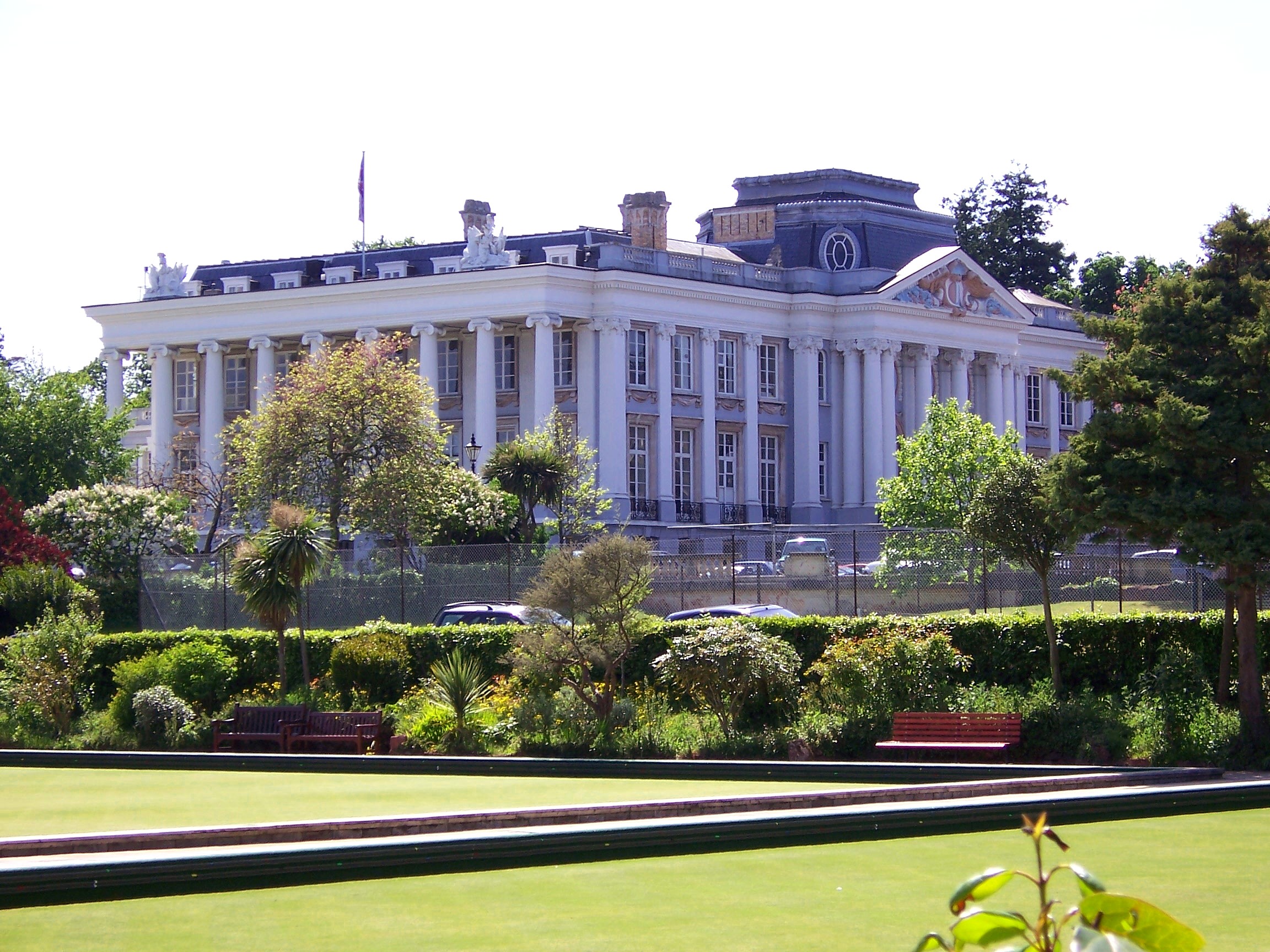|
Edward Howard, 9th Duke Of Norfolk
Edward Howard, 9th Duke of Norfolk (5 June 1686 – 20 September 1777), of Worksop Manor in Nottinghamshire and of Norfolk House in London, was a British peer, politician and hereditary Earl Marshal. Origins He was the third of the five sons of Lord Thomas Howard (d.1689), of Worksop (younger brother of Henry Howard, 7th Duke of Norfolk (d.1701), both sons of Henry Howard, 6th Duke of Norfolk (d.1684)) by his wife Mary Elizabeth Savile (d.1732). An elder brother Henry Howard (1684-1720) was Roman Catholic Bishop-elect before his death. His younger brothers were Richard Howard (1687-1722) who died in Rome, where he was a Canon of St. Peter Basilica and Philip Howard (1688-1750). Career He took part in the Jacobite Rising of 1715, one of several English noblemen to do so. Through the intercession of his brother, he escaped the punishment for high treason. He succeeded as 9th Duke of Norfolk in 1732, after the death of his childless elder brother Thomas Howard, 8th Duke of Norfol ... [...More Info...] [...Related Items...] OR: [Wikipedia] [Google] [Baidu] |
His Grace
His Grace or Her Grace is an English Style (manner of address), style used for various high-ranking personages. It was the style used to address English monarchs until Henry VIII and the Scottish monarchs up to the Act of Union (1707), Act of Union of 1707, which united the Kingdom of Scotland and the Kingdom of England. Today, the style is used when referring to archbishops and non-royal dukes and duchesses in the United Kingdom. Examples of usage include His Grace The Duke of Norfolk; His Grace The Lord Archbishop of Canterbury; or "Your Grace" in spoken or written address. As a style of Dukes in the United Kingdom, British dukes it is an abbreviation of the full formal style "The Most High, Noble and Potent Prince His Grace". Royal dukes, for example Prince Edward, Duke of Kent, are addressed with their higher royal style, Royal Highness. The Duchess of Windsor was styled "Your Grace" and not Royal Highness upon marriage to Prince Edward, Duke of Windsor. Ecclesiastical usage ... [...More Info...] [...Related Items...] OR: [Wikipedia] [Google] [Baidu] |
Duke Of Norfolk
Duke of Norfolk is a title in the peerage of England. The seat of the Duke of Norfolk is Arundel Castle in Sussex, although the title refers to the county of Norfolk. The current duke is Edward Fitzalan-Howard, 18th Duke of Norfolk. The dukes have historically been Roman Catholic, a state of affairs known as recusancy in England. All past and present dukes have been descended from Edward I. The son of Thomas Howard, 3rd Duke of Norfolk, was Henry Howard, Earl of Surrey; the earl was descended from Edward III. As all subsequent dukes after Thomas Howard, 4th Duke of Norfolk are descendants of the Earl of Surrey, this means they are also descended from Edward III. History Before the Dukes of Norfolk, there were the Bigod Earls of Norfolk, starting with Roger Bigod from Normandy (died 1107). Their male line ended with Roger Bigod, 5th Earl of Norfolk, who died without an heir in 1306, so their titles and estates reverted to the crown. Edward II then granted his brother, ... [...More Info...] [...Related Items...] OR: [Wikipedia] [Google] [Baidu] |
Motto
A motto (derived from the Latin , 'mutter', by way of Italian , 'word' or 'sentence') is a sentence or phrase expressing a belief or purpose, or the general motivation or intention of an individual, family, social group, or organisation. Mottos (or mottoes) are usually found predominantly in written form (unlike slogans, which may also be expressed orally), and may stem from long traditions of social foundations, or from significant events, such as a civil war or a revolution. A motto may be in any language, but Latin has been widely used, especially in the Western world. Heraldry In heraldry, a motto is often found below the shield in a banderole; this placement stems from the Middle Ages, in which the vast majority of nobles possessed a coat of arms complete with a motto. In the case of Scottish heraldry, it is mandated to appear above the crest. Spanish coats of arms may display a motto in the bordure of the shield. In heraldic literature, the terms 'rallying cry' res ... [...More Info...] [...Related Items...] OR: [Wikipedia] [Google] [Baidu] |
Nikolaus Pevsner
Sir Nikolaus Bernhard Leon Pevsner (30 January 1902 – 18 August 1983) was a German-British art historian and architectural historian best known for his monumental 46-volume series of county-by-county guides, ''The Buildings of England'' (1951–74). Life Nikolaus Pevsner was born in Leipzig, Saxony, the son of Anna and her husband Hugo Pevsner, a Russian-Jewish fur merchant. He attended St. Thomas School, Leipzig, and went on to study at several universities, Munich, Berlin, and Frankfurt am Main, before being awarded a doctorate by Leipzig in 1924 for a thesis on the Baroque architecture of Leipzig. In 1923, he married Carola ("Lola") Kurlbaum, the daughter of distinguished Leipzig lawyer Alfred Kurlbaum. He worked as an assistant keeper at the Dresden Gallery between 1924 and 1928. He converted from Judaism to Lutheranism early in his life. During this period he became interested in establishing the supremacy of German modernist architecture after becoming aware of Le ... [...More Info...] [...Related Items...] OR: [Wikipedia] [Google] [Baidu] |
Great Hall
A great hall is the main room of a royal palace, castle or a large manor house or hall house in the Middle Ages, and continued to be built in the country houses of the 16th and early 17th centuries, although by then the family used the great chamber for eating and relaxing. At that time the word "great" simply meant big and had not acquired its modern connotations of excellence. In the medieval period, the room would simply have been referred to as the "hall" unless the building also had a secondary hall, but the term "great hall" has been predominant for surviving rooms of this type for several centuries, to distinguish them from the different type of hall found in post-medieval houses. Great halls were found especially in France, England and Scotland, but similar rooms were also found in some other European countries. A typical great hall was a rectangular room between one and a half and three times as long as it was wide, and also higher than it was wide. It was entered ... [...More Info...] [...Related Items...] OR: [Wikipedia] [Google] [Baidu] |
Elmore Court
Elmore Court is a grade II* listed mansion, located at Elmore in the Stroud district of Gloucestershire, England. The original building dates from between 1564 and 1588. History The house has been the family seat of the Guise Baronets for nearly 800 years, first granted by John of Burgh, who was part of the court of Henry III with the rent set at "One clove of Gillyflower" each year. The current house was built between 1564 and 1588 and altered in the 18th and 19th centuries. The Guise Mausoleum, built in 1733, is in the churchyard of St John the Baptist, the local church. The Guise family were non-resident from about 1685 to about 1845, when Sir John Wright Guise took up residence. The house was used as a school from 1778, originally under the Revd. Charles Bishop (died 1788), and later under the Carveth family to about 1830. Its most distinguished pupil was the future surgeon William Lawrence FRS. The house was owned by Sir Anselm Guise, 6th Baronet, from 1921 to 1970. ... [...More Info...] [...Related Items...] OR: [Wikipedia] [Google] [Baidu] |
Sir John Guise, 2nd Baronet
Sir John Guise, 2nd Baronet (c.1654 – November 1695) of Elmore Court, Gloucestershire was an English landowner and Member of Parliament. Life He was born the only son of Sir Christopher Guise, 1st Baronet of the Elmore baronets of Gloucestershire and educated at Christ Church, Oxford, where he matriculated in 1669. He then travelled in France for a while. He succeeded his father to the baronetcy and to Elmore Court in 1670. He acted as a local Justice of the Peace and as a Deputy-Lieutenant of Gloucestershire (?1674-81, 1689-death). He was Mayor of Gloucester for 1690–91 and Vice-Admiral of Gloucestershire from 1691 to his death. He was elected the Member of Parliament for Gloucestershire in February 1679, August 1679 and 1681 but defeated in the election of 1685 by the Court party candidate and forced to take refuge in the Netherlands. He returned in 1688 with William of Orange and then took part in the capture of Bristol as Colonel of a foot regiment. Re-elected for Glou ... [...More Info...] [...Related Items...] OR: [Wikipedia] [Google] [Baidu] |
Paignton
Paignton ( ) is a seaside town on the coast of Tor Bay in Devon, England. Together with Torquay and Brixham it forms the borough of Torbay which was created in 1998. The Torbay area is a holiday destination known as the English Riviera. Paignton's population in the United Kingdom Census of 2011 was 49,021. (Word document) It has origins as a Celtic settlement and was first mentioned in 1086. It grew as a small fishing village and a new harbour was built in 1847. A railway line was opened to passengers in 1859 creating links to Torquay and London. As its population increased, it merged with the villages of Goodrington and Preston. Paignton is around north east of Plymouth and south of Exeter, and has the fourth largest population in Devon. History A Roman burial was discovered in 1993 on the Hookhills estate by a householder digging a patio. At first thought to be Neolithic, it was later radiocarbon dated to be between 230 and 390 CE. The burial is of a young woman age ... [...More Info...] [...Related Items...] OR: [Wikipedia] [Google] [Baidu] |
Blagdon, Paignton
Blagdon historically in the parish of PaigntonPole, p.279 in Devon, England (today in the parish of Collaton St Mary), is an historic manor, the seat of the Kirkham family from the 13th to 17th centuries. The manor house known as Blagdon Manor (House) (or Blagdon Barton) survives as a grade II* listed building about two miles west of the historic centre of the town of Paignton, situated behind the "Blagdon Inn" public house (former stables), and almost surrounded by the "Devon Hills Holiday Park" of caravans and mobile homes, set-back at the end of a short driveway off the A385 Paignton to Totnes road. The settlements or farms of Higher Blagdon, Middle Blagdon and Lower Blagdon are situated to the north of the manor house. In the ancient Church of St John, the parish church of Paignton, survives the Kirkham Chantry Chapel, occupying the south transept, "without a doubt the chief interest of the church", consisting of an elaborately sculpted stone screen erected by the Kirkham ... [...More Info...] [...Related Items...] OR: [Wikipedia] [Google] [Baidu] |
Mary Howard, Duchess Of Norfolk (d
Duchess Mary is the name of: *Mary Stewart, Duchess of Richmond (1622–1685), English duchess *Mary Howard, Duchess of Norfolk (died 1705) (c. 1659–1705), British peeress * Mary Howard, Duchess of Norfolk (died 1773) (c. 1712–1773), British peeress *Mary Osborne, Duchess of Leeds (1723–1764), British duchess *Princess Mary, Duchess of Gloucester and Edinburgh (1776–1857), member of the British Royal Family *Mary Russell, Duchess of Bedford (1865–1937), English pilot and ornithologist *Mary Cavendish, Duchess of Devonshire (1895–1988), Chancellor of the University of Exeter * Mary Somerset, Duchess of Beaufort (sportswoman) (1897–1987), Commander of the Order of St John *Mary Montagu Douglas Scott, Duchess of Buccleuch (1900–1993), British duchess *Mary Innes-Ker, Duchess of Roxburghe Mary Evelyn Hungerford Innes-Ker, Duchess of Roxburghe (23 March 1915 – 2 July 2014), born Lady Mary Crewe-Milnes, [...More Info...] [...Related Items...] OR: [Wikipedia] [Google] [Baidu] |
Armorial Bearings Of The BLOUNT Family Of Grendon, Herefordshire
A roll of arms (or armorial) is a collection of coats of arms, usually consisting of rows of painted pictures of shields, each shield accompanied by the name of the person bearing the arms. The oldest extant armorials date to the mid-13th century, and armorial manuscripts continued to be produced throughout the Early Modern period. ''Siebmachers Wappenbuch'' of 1605 was an early instance of a printed armorial. Medieval armorials usually include a few hundred coats of arms, in the late medieval period sometimes up to some 2,000. In the early modern period, the larger armorials develop into encyclopedic projects, with the ''Armorial général de France'' (1696), commissioned by Louis XIV of France, listing more than 125,000 coats of arms. In the modern period, the tradition develops into projects of heraldic dictionaries edited in multiple volumes, such as the ''Dictionary of British Arms'' in four volumes (1926–2009), or ''J. Siebmacher's großes Wappenbuch'' in seven vol ... [...More Info...] [...Related Items...] OR: [Wikipedia] [Google] [Baidu] |
Buckenham Tofts
Buckenham Tofts (or Buckenham Parva; Little Buckenham) is a now deserted historic parish and manor in Norfolk, England, situated about 7 miles north of Thetford, and since 1942 situated within the Stanford Training Area, a 30,000-acre military training ground closed to the public. It was situated about one mile south of the small village of Langford, with its Church of St Andrew, and about one mile west of Stanford, with its All Saints' Church and one mile north of West Tofts, with its Church of St Mary, all deserted and demolished villages. None of these settlements (except West Tofts) are shown on modern maps but are simply replaced by "Danger Area" in red capital letters. It is situated within Breckland heath, a large area of dry sandy soil unsuited to agriculture. The parish church of Buckenham Tofts, dedicated to St Andrew, was demolished centuries ago and stood to the immediate north of Buckenham Tofts Hall, the now-demolished manor house, as is evidenced by a graveyard w ... [...More Info...] [...Related Items...] OR: [Wikipedia] [Google] [Baidu] |





